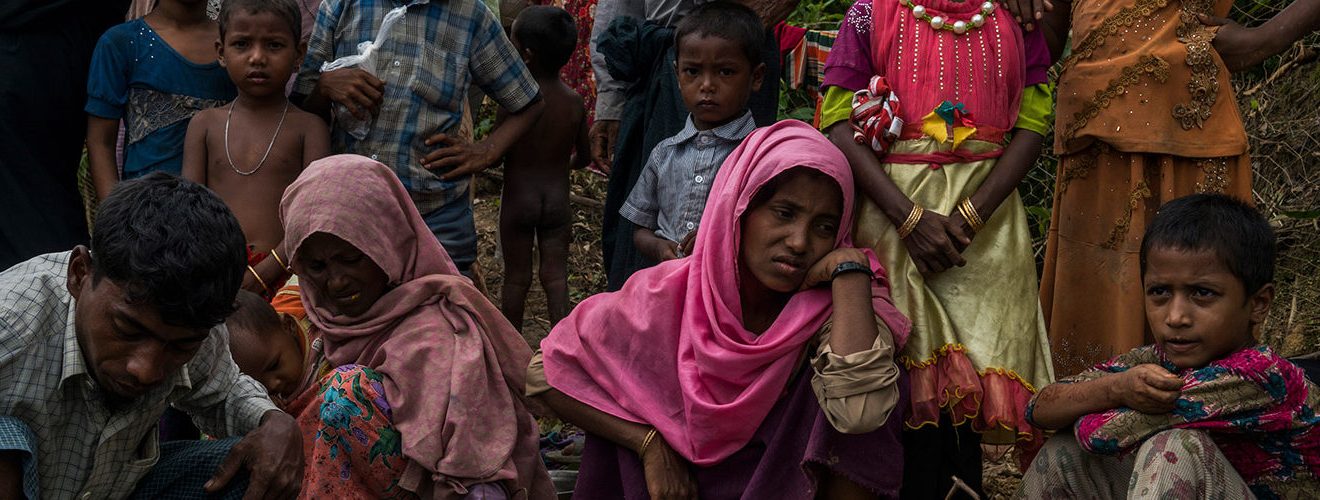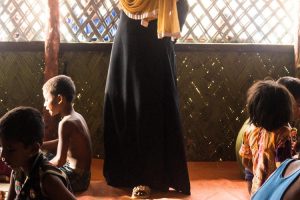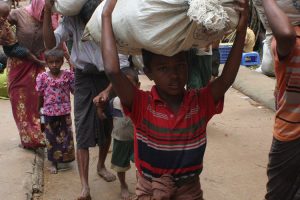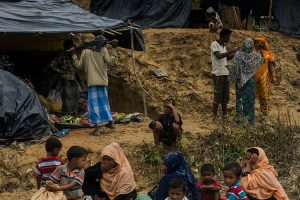The United Nations Refugee Agency (UNHCR) said on Tuesday, September 12 that it has begun an emergency airlift of aid to help around 370,000 Rohingya refugees have fled violence in Myanmar in the past 18 days.
The violence began on August 25 when the Arakan Rohingya Salvation Army militant group attacked 30 police outposts in Rakhine state, sparking a government crackdown. The government response was described as a “cruel military operation” and a “systematic attack” on the Rohingya community which seemed “a textbook example of ethnic cleansing,” by UN High Commissioner for Human Rights Zeid Ra’ad Al Hussein on Monday.

“We now estimate that 370,000 stateless Rohingya refugees have fled into Bangladesh since 25 August,” UNHCR spokesperson Adrian Edwards said at a press briefing, attributing the increase of 67,000 since Monday to interagency assessment teams being able to reach more places where refugees have gathered.
“A major UNHCR airlift with emergency relief supplies for Rohingya refugees in Bangladesh is today under way,” Edwards said, adding that two flights landing on Tuesday were to meet the immediate needs of 25,000 refugees.
The first flight, carrying 91 metric tonnes of aid, including shelter materials, jerry cans, blankets, and sleeping mats, landed in Dhaka on Tuesday morning. A second flight carrying 1,700 family tents was due in the afternoon.
“Further flights are being planned, ultimately delivering emergency aid for some 120,000 refugees in total,” Edwards said.

The UNHCR operates two camps for displaced people in the area. Edwards said that the population of these camps had more than doubled since August 25 to more than 70,000 refugees.
“Both sites are beyond saturation point. Some refugees who have been living in these camps are hosting up to 15 newly-arrived families in their small huts, yet new arrivals are still spilling onto the walkways under plastic sheets. We have opened up public buildings and set up large tents to accommodate the new arrivals,” Edwards said.

Separately, the UNHCR published figures dated September 7 showing that its funding request for Myanmar operations was only 19 percent met – only $13.6 million has so far been received out of the $70.6 million required for 2017.
The World Food Programme also published a report dated September 7 which said that since August 27 it had provided 53,195 people with “high-energy biscuits” and delivered hot meals to 52,000 people.
The WFP report shows that it only held 875 metric tonnes of the 12,000 metric tonnes of rice it requires, and that the shortfall in its estimated requirements of high-energy biscuits was 74 metric tonnes. The agency’s estimates were made when approximately 164,000 people had arrived in Bangladesh and it had forecast a total of 300,000 people fleeing Myanmar.
WFP urgently requires $14.8 million for its operations in the Cox’s Bazar area of Bangladesh, including $1.5 million for nutrition support to women and children.

The Inter Sector Coordination Group for Cox’s Bazar, which is chaired by the International Organization for Migration, also published a situation report which said that 185,000 of the recent refugee arrivals are in new spontaneous sites, and that there is now an estimated total of 567,789 refugees in the area.
The ICSG said it intends to allocate 1,500 – 2,000 acres of land for new arrivals to the north of Kutupalong Makeshift camp, and that some people are already beginning to settle on the proposed site. On September 10, WFP, IOM and UNHCR were requested to immediately begin work on establishing the site.







